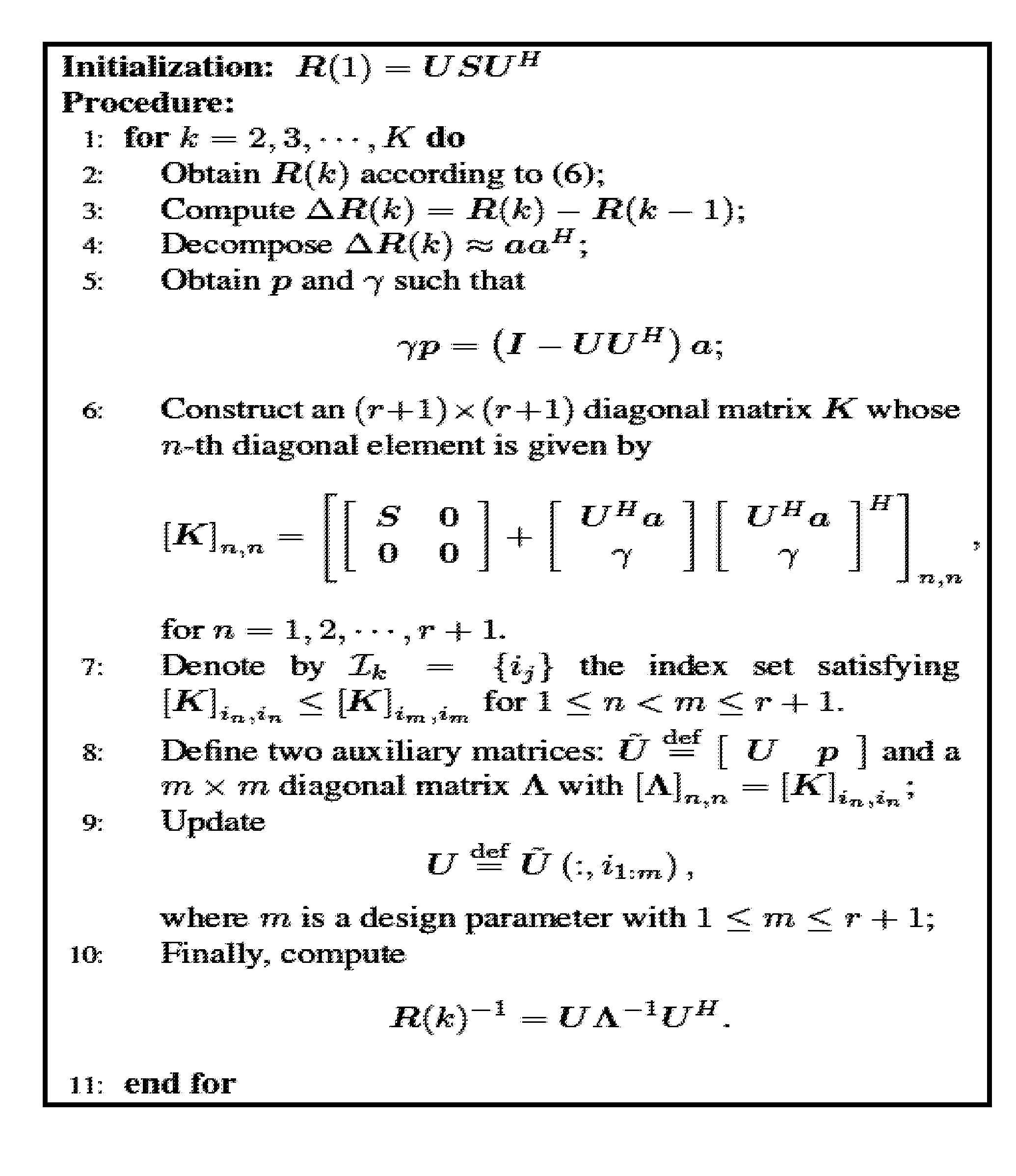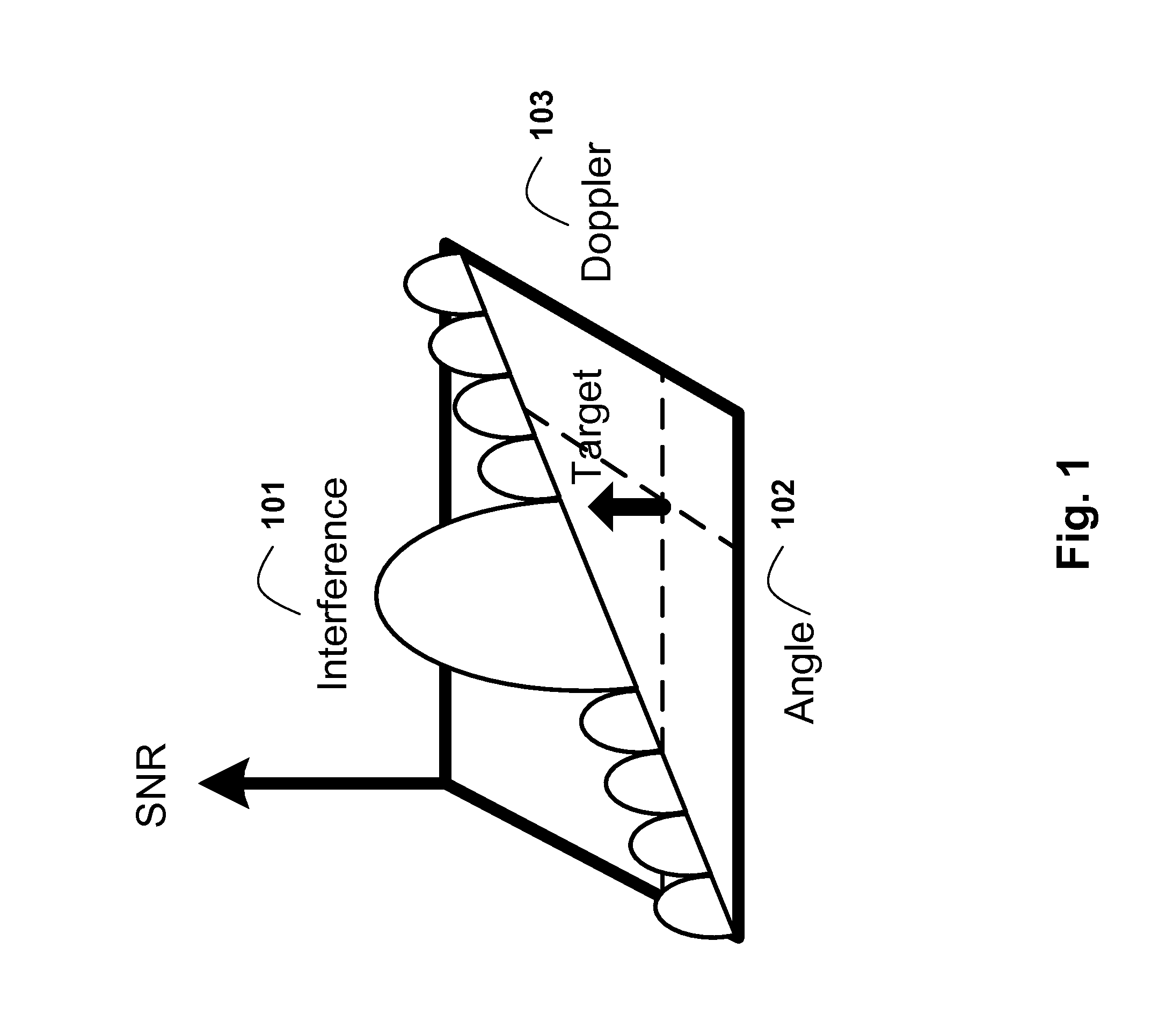Method for Suppressing Clutter in Space-Time Adaptive Processing Systems
a space-time adaptive processing and clutter technology, applied in the field of suppression clutter, can solve the problems of prohibitive computational complexity, difficult to implement stap for real-time target detection, and handicap conventional stap, and achieve the effect of reducing computational complexity and near-optimal performan
- Summary
- Abstract
- Description
- Claims
- Application Information
AI Technical Summary
Benefits of technology
Problems solved by technology
Method used
Image
Examples
Embodiment Construction
[0019]The embodiments of our invention provide a method for detecting target using low complexity clutter suppression in space-time adaptive processing (STAP) systems.
[0020]We use the following notational conventions. Vectors and matrices are denoted with boldface, ∥•∥ represents the Euclidean norm of the enclosed vector, and |•| denotes the cardinality of the enclosed set. IN is the N×N identity matrix. We use (•)H and R{•} for Hermitian transposition and the real part, respectively. Finally, [A]i,j denotes the i-th row and j-th column entry of matrix A, and A(:,j) is the j-th column of the matrix A.
[0021]A sensing system transmits pulses of the form
s(t)=R{AtE(t)ejωct},
where ωc is the carrier frequency, At and E(t) are the transmit power and pulse waveform, respectively.
[0022]As shown in FIG. 2, the returned signals are arranged in K range cells 201 for N antennas 202, and M pulses 203. The range cells correspond to a current time instant and previous time instants.
[0023]First, we ...
PUM
 Login to View More
Login to View More Abstract
Description
Claims
Application Information
 Login to View More
Login to View More - R&D
- Intellectual Property
- Life Sciences
- Materials
- Tech Scout
- Unparalleled Data Quality
- Higher Quality Content
- 60% Fewer Hallucinations
Browse by: Latest US Patents, China's latest patents, Technical Efficacy Thesaurus, Application Domain, Technology Topic, Popular Technical Reports.
© 2025 PatSnap. All rights reserved.Legal|Privacy policy|Modern Slavery Act Transparency Statement|Sitemap|About US| Contact US: help@patsnap.com



